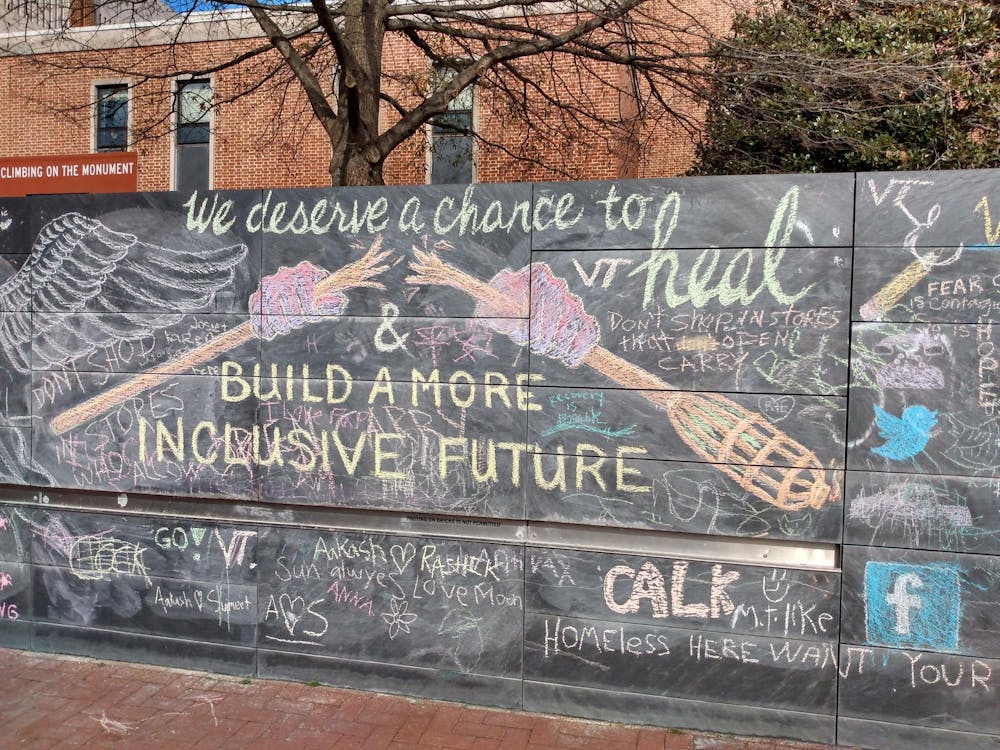The New York Times holds that in order to maintain its integrity, the paper must “do nothing that might erode readers’ faith and confidence in [its] news columns.” The term “editorial integrity” is thrown around often, perhaps so often that it has started to lack tangible meaning. But I think The Times sums it up well: as journalists, we must be honest, transparent and unbeholden to anything but our audience and the truth. The Cavalier Daily’s recently introduced Brand Link policy prevents us from living up to those ideals.
I discussed the policy with Editor-in-Chief Julia Horowitz last week. She assured me that if Brand Link weren’t profitable or the staff didn’t like it, we could vote it down during The Cavalier Daily’s Constitutionals meeting, held annually in October. But our integrity has already been compromised in lieu of profit. We can’t get it back. This policy was almost entirely the brainchild of Horowitz alone, by her own admission. And this decision was made by the current Managing Board unilaterally, despite an all-staff meeting last semester held (at least ostensibly) to gauge staff opinion on the issue, and at which staffers were relatively divided.
The financial struggles of The Cavalier Daily are real and pressing. We are editorially independent, so we get no money from the University and we pay rent for our space in Newcomb. Our current revenue model allows us to break-even during the seven-month print cycle, but we need extra funds to pay for our summer rent and that reality forced us to view Brand Link as a “necessary opportunity.”
I asked why we haven’t tried to increase the use of print ads, especially considering they seem more profitable. We currently charge $240 for a quarter-page or banner ad, and will charge a mere $150 for a 300-word sponsored article. Horowitz told me that the “ad staff is completely saturated with what they’re [already] trying to do.” Recently, in our International Students special issue, we had to run extra pages just to accommodate advertising demands. So, apparently, ad revenue at The Cavalier Daily is not actually plummeting in conjunction with national trends — it is at the very least holding steady, but still insufficient to cover our expenses.
The Cavalier Daily Managing Board has attempted to justify sponsored content — which, oddly, the current Executive Editor Dani Bernstein condemned in a column last year — by pointing out that several major national media organizations have embraced this revenue model as well. But these publications differ from The Cavalier Daily in an important way — they pay their employees. The burden on, say, The Washington Post to reconcile its values with its economic model is lower, because people’s livelihoods and careers depend on this new revenue stream. Staffers of The Cavalier Daily volunteer for free. We need to work harder to justify these sorts of ideological compromises. Horowitz’s recent letter to our readers said that we wouldn’t offer advertisers our resources, only our “platform,” and that is seen as a positive compromise. But our platform is more than the webpage on which we publish — our platform is a newspaper, and that comes with certain expectations and responsibilities.
Horowitz says “we’re [trying] to do something that nobody in media really wants to do. . . in the best way that we can.” To me, The Cavalier Daily seems like a trailblazer — in the worst way. We are embracing a revenue model before its validity has been decided. To the point, the Federal Trade Commission has yet to decide how it is going to regulate sponsored content, despite a nearly century-long debate. According to Horowitz, though, “every media publication has had some sort of conversation in the past year” about sponsored content. And in her eyes, even if we have drafted our own policy before many key media players have written their own, that fact is to our benefit.
If student media only reacted to nationwide trends, rather than stepping out in front of them, we would, according to Horowitz, “be forced to adopt those models as they already exist. [Instead,] we have an audience that we feel is relatively secure [that we can experiment on].” But here’s the problem: that audience trusts us, and if recent media studies are correct, we are going to be purposefully deceiving them. According to a recent survey by Contently, less than half of news consumers are able to identify sponsored content when they read it. It is advertising, and it is labeled as such, but people still don’t understand, because it’s not an image or a brand logo — it’s a promotional article disguised as news.
What does the term “Brand Link” mean to the uninitiated? Horowitz assured me that an explanation of our Brand Link policy would remain a fixture on our website, and she said that the model “is not coming from a place of ignorance” about editorial integrity concerns. She says that “much more of our energy is going into long-term solutions” than into the Brand Link model. But those long-term solutions are moot if our audience can no longer trust us. Similar collegiate papers, such as The Daily Tar Heel, have avoided the necessity for sponsored content by establishing and utilizing strong alumni networks. I question why The Cavalier Daily didn’t focus more attention on doing the same. Our administration has known for years that The Cavalier Daily was facing (and would continue to face) revenue concerns. Our existing alumni association has had “a rebirth in the past three years or so,” according to Horowitz, and seems a potentially valuable resource (along with grants, crowdfunding, increased print advertising or other partnerships) that went relatively ignored throughout several Managing Board terms in favor of the simple choice — Brand Link.
Ashley Spinks is an Opinion columnist for The Cavalier Daily. She can be reached at a.spinks@cavalierdaily.com.






